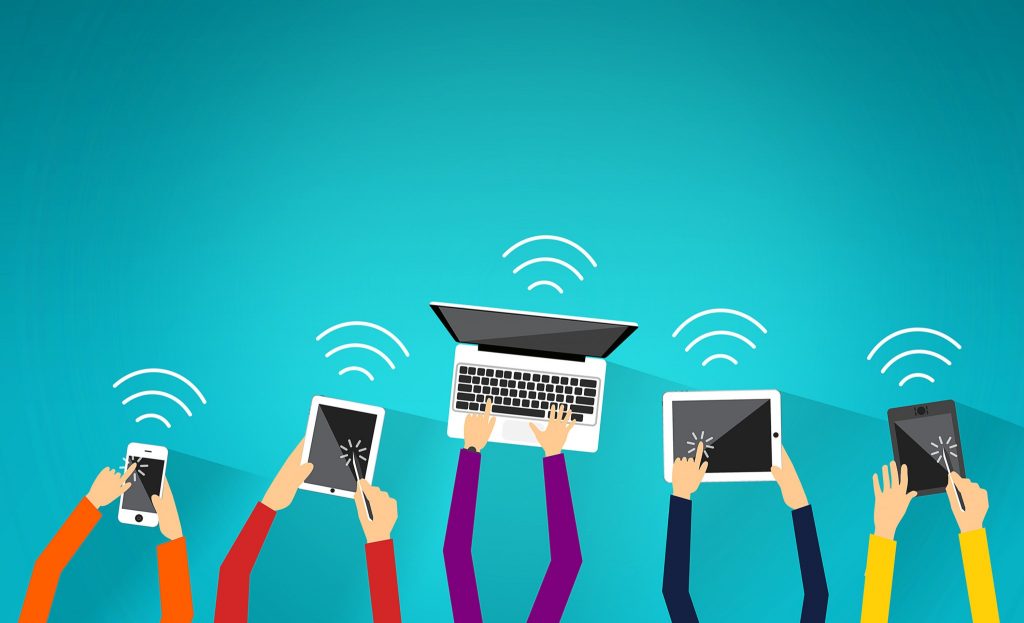Like so many other people, one step in my nightly ritual before going to bed is to put my smartphone on the charger. Most of the time, this is something that I do without ever thinking twice about it. Every once in a while, though, I find myself seriously second-guessing my approach to charging electronic devices.
Last week is a perfect example of just such a situation. I was selected as a participant in a post-landing simulation on an Orion spacecraft simulator. The other members of my crew and I were outfitted in spacesuits and strapped into a space capsule. The capsule was lowered by a crane into a swimming pool. The flight crew had to work through various circumstances such as hydrazine leaks and life support system failures, and use situation-appropriate techniques to evacuate the spacecraft. (You can read more about my space-flight training here.)

In addition to my responsibilities as a member of the flight crew, I was also tasked with capturing 360-degree video of all the tests. I had several GoPro Fusion cameras set up inside and outside of the space capsule. These cameras use massive batteries (at least as GoPro cameras go), and each camera was going through about six batteries a day. Needless to say, I needed an efficient way of charging a lot of batteries each night and in a really short amount of time.
My solution was to use a USB charging brick. It’s basically just a charger that has ten USB ports built-in. Since each of my batteries came with a USB charger that could hold two batteries, I was able to charge 20 batteries at a time — or so I thought. Less than an hour in, my overloaded charger burned out on me. I found myself scrambling to find a way to charge all of the batteries, and ended up pawning some of the batteries off on friends to charge in their rooms.
My point is that the last several years have seen an explosion of consumer electronic devices. Not only do most of us use more devices than we used to, these devices are increasingly becoming necessities in our day-to-day lives. Although charging 20 batteries at the same time might be an extreme example, it underscores the point that there are limits to current charging technologies. Thankfully, there may soon be a better solution — wireless charging.
Wireless charging has been around in one form or another for many years. An old Windows 8 phone that I used to have came with an induction charging pad capable of charging the phone without actually plugging it in. Even today, Toyota includes similar induction chargers in some of its cars. Although induction charging is a step in the right direction, we may soon be charging or devices using true wireless power in a manner that that was envisioned by Nikola Tesla over 100 years ago.
Wireless power gets a boost from the FCC
Right now, there are several different companies that are creating technologies for wirelessly delivering power. In December 2017, however, the FCC certified a device created by San Jose-based company named Energous. The device is a mid-field transmitter called WattUp, which delivers power by converting it to a transmittable radio frequency. A receiver can then demodulate and convert it back into electricity. Being that such a device has finally received FCC approval, I think that it is time to begin treating wireless power delivery as a serious technology.
The future of wireless charging

Although it is tempting to focus on the various technologies that can be used for wireless power delivery, there are at least a couple of issues that I have yet to hear anyone discuss.
One of these issues is the eventual widespread availability of wireless power. Twenty years ago, WiFi was an obscure technology that almost no one used. Today, it is somewhat rare to find a public place where WiFi connectivity is not available.
One of the reasons why WiFi became so heavily adopted was because it was standardized. All hardware vendors adhere to a common set of standards with regard to WiFi integration in their devices. This means that a single WiFi network can support a Microsoft Surface tablet, an iPhone, a Google Chromebook, and a variety of other devices.
If wireless power delivery is eventually standardized in the same way, it could mean that wireless power will be available in nearly all public places. This would obviously be convenient because it means that your smartphone or laptop could automatically start charging any time you happen to walk into an area where wireless power delivery is available. Even so, focusing on convenience overlooks the larger benefit.
If you’ve ever disassembled a smartphone, you’ve no doubt found that the CPU and radio receivers occupy a relatively small percentage of the device’s overall volume. Most of the space inside of a smartphone is taken up by the screen and by the battery. If wireless power delivery becomes widely available, it means that manufacturers of consumer electronic devices will be able to get away with using much smaller batteries than the ones that are used today. While there may be environmental benefits to doing so, having the ability to use significantly smaller batteries will also mean that manufacturers will be able to create ever smaller devices.
More than likely though, we aren’t going to see significant size reductions in consumer-grade tablets or smartphones. Instead, I think that manufacturers will opt to use the space gained by shrinking the battery to accommodate additional storage, larger microprocessors, or other components. In other words, reducing the size of the battery in a portable electronic device frees up space to include additional electronic components that will allow for greater computing power. While it’s true that these additional components will also increase a device’s power consumption, having wireless power widely available should make that a non-issue.
A second issue that I have yet to hear anyone discuss is the potential for power leaching. We’ve all heard stories of that guy who does not subscribe to Internet service because he can sponge off of his neighbor’s WiFi signal. The same thing could eventually end up being an issue with the wireless power transmitters that we will inevitably have in our homes.
Although consumer-grade wireless power transmitters are going to be designed to power (or charge) multiple devices simultaneously, there will be a limit to the amount of power that a consumer-grade transmitter will be able to deliver. If your next-door neighbor decides to power their new big screen TV off of your wireless power delivery system, then it will reduce the number of devices that you will be able to power yourself. Never mind the fact that a neighbor’s use of your wireless power could drive up your electric bill.
In the future, I suspect that manufacturers of wireless power delivery systems will integrate a Bluetooth-like mechanism that will allow devices to be joined to the home’s wireless power delivery system. Such a system would in essence positively identify each device, so that only authorized devices would receive power. I am completely speculating on the eventual existence of such a mechanism, but it seems unavoidable.
A real ‘life-changing technology’
Over the last several decades, there were countless “life-changing technologies” that simply did not catch on for one reason or another. Even so, the wireless delivery of power seems like something that will not only catch on but become completely ubiquitous within a decade. Like WiFi, it will take time to convince people that the technology is safe and for the infrastructure to be put in place. Eventually, though, the technology will hit critical mass and I think that nearly every consumer electronic device and IoT device will be equipped with the ability to use wireless power.
Featured image: Pixabay



